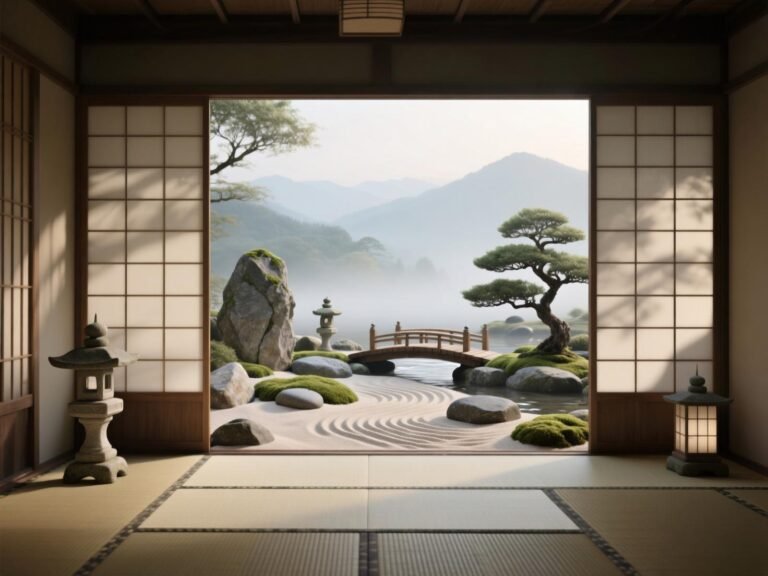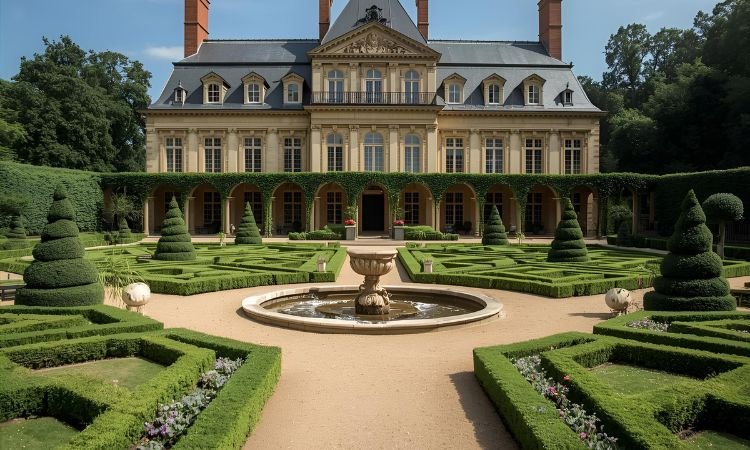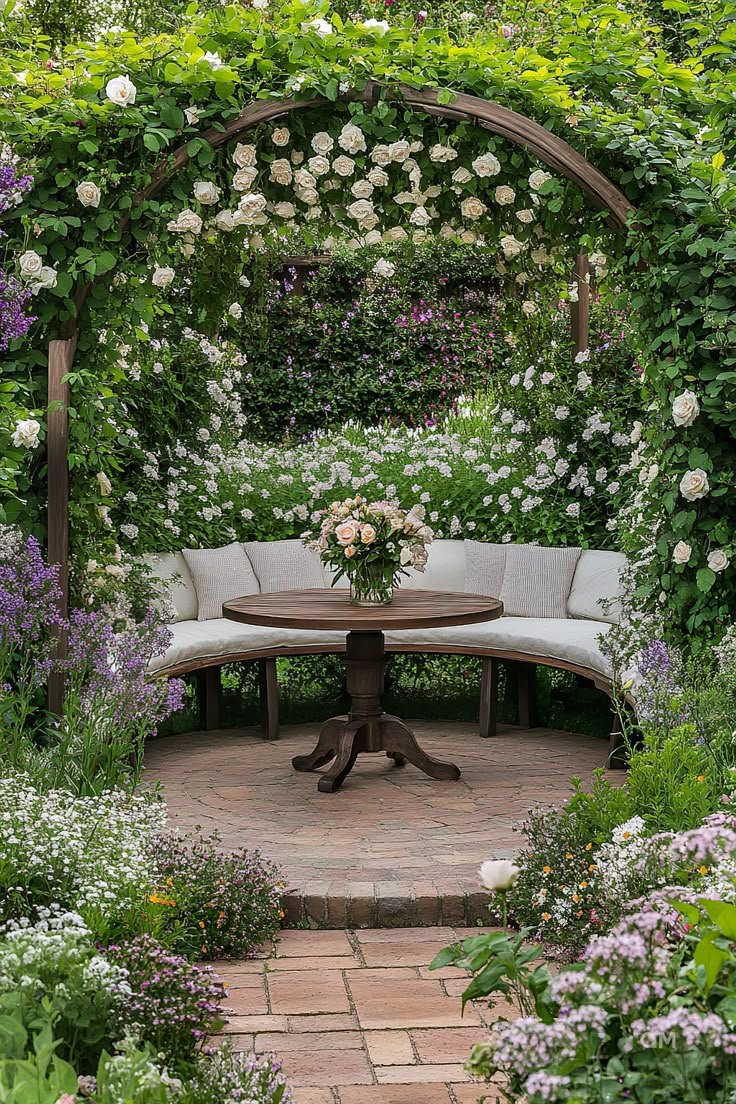Japanese Garden Design Ideas to Bring Zen to Your Outdoor Space
Japanese gardens are more than just beautiful landscapes—they’re an invitation to tranquility, a physical form of mindfulness, and a harmonious blend of nature and artistry. Whether you have a sprawling backyard or a cozy patio, incorporating Japanese garden design can transform your outdoor space into a serene sanctuary.
Rooted in centuries of tradition, Japanese gardens emphasize balance, minimalism, and symbolism. From raked gravel patterns in Zen rock gardens to gently flowing koi ponds, every element serves a purpose. It’s not about lavish ornamentation—it’s about creating a peaceful atmosphere that encourages contemplation and calm.
Tips for Crafting a Zen Japanese Garden
Imagine stepping into your backyard, greeted by a serene Japanese garden with smooth pebbles, lush greenery, and the gentle trickle of water, the space radiating tranquility like a Zen temple. These budget-friendly design ideas will transform your outdoor area into a peaceful retreat, perfect for quiet meditation or sharing tea with friends.
- Create a Stone Path: Lay flat stepping stones or gravel in an organic pattern to guide the way through your garden. It’s like your space is whispering a mindful journey.
- Add a Water Feature: Incorporate a small bamboo fountain or stone basin for the soothing sound of trickling water. It feels like your garden’s humming a calming melody.
- Plant Minimalist Greenery: Use moss, ferns, or dwarf maples for lush, low-maintenance beauty. It’s like your garden’s embracing nature’s quiet elegance.
- Include a Lantern Accent: Place a stone or metal lantern to evoke traditional Japanese aesthetics and soft lighting. It’s like your space is glowing with Zen serenity.
- Use Bamboo Elements: Add bamboo fencing or a small bridge for a natural, authentic touch. It feels like your garden’s rooted in the simplicity of a Kyoto retreat.
- Incorporate Raked Gravel: Create a gravel area raked into ripples to mimic flowing water, fostering calm. It’s like your garden’s sculpting waves of tranquility.
- Add a Meditation Bench: Place a simple wooden bench for quiet reflection, tucked among plants. It’s like your space is inviting you to pause and breathe.
In this listicle, we’ve gathered 20 inspiring Japanese garden design ideas that can work in various types of spaces. Whether you’re seeking a complete backyard transformation or a small corner of peace, these ideas will help you infuse your environment with the timeless beauty and serenity of Japanese garden aesthetics.
Create Tranquility with a Tsubo-Niwa Courtyard Garden

Small yet impactful, the tsubo-niwa—a traditional Japanese courtyard garden—brings serenity into even the most compact spaces. This design centers around minimalist elements like moss, stepping stones, and carefully placed rocks, creating a calm retreat within the heart of a home.
Trees and shrubs are intentionally asymmetrical to evoke natural growth, while subdued lighting and organic textures harmonize with the architecture.
Tsubo-niwa gardens are perfect for urban dwellers or those seeking to add a contemplative corner within an enclosed space. Their low-maintenance nature and year-round beauty make them ideal for modern lifestyles without sacrificing authenticity.
Incorporate Seasonal Color with a Strolling Garden Path

Inspired by kaiyū-shiki-teien or strolling gardens, this layout encourages mindful movement through the landscape. A winding path guides visitors past lush azaleas, a reflective pond, and a symbolic stone lantern—all carefully arranged to highlight seasonal color changes.
This garden design invites exploration and interaction, evoking the feeling of walking through a painting. If your space allows, layering plants to showcase spring blooms, summer greenery, and autumn foliage will keep the garden dynamic throughout the year.
The balance between structured paths and natural growth makes this a timeless Japanese garden concept.
Design a Serene Karesansui Zen Rock Garden
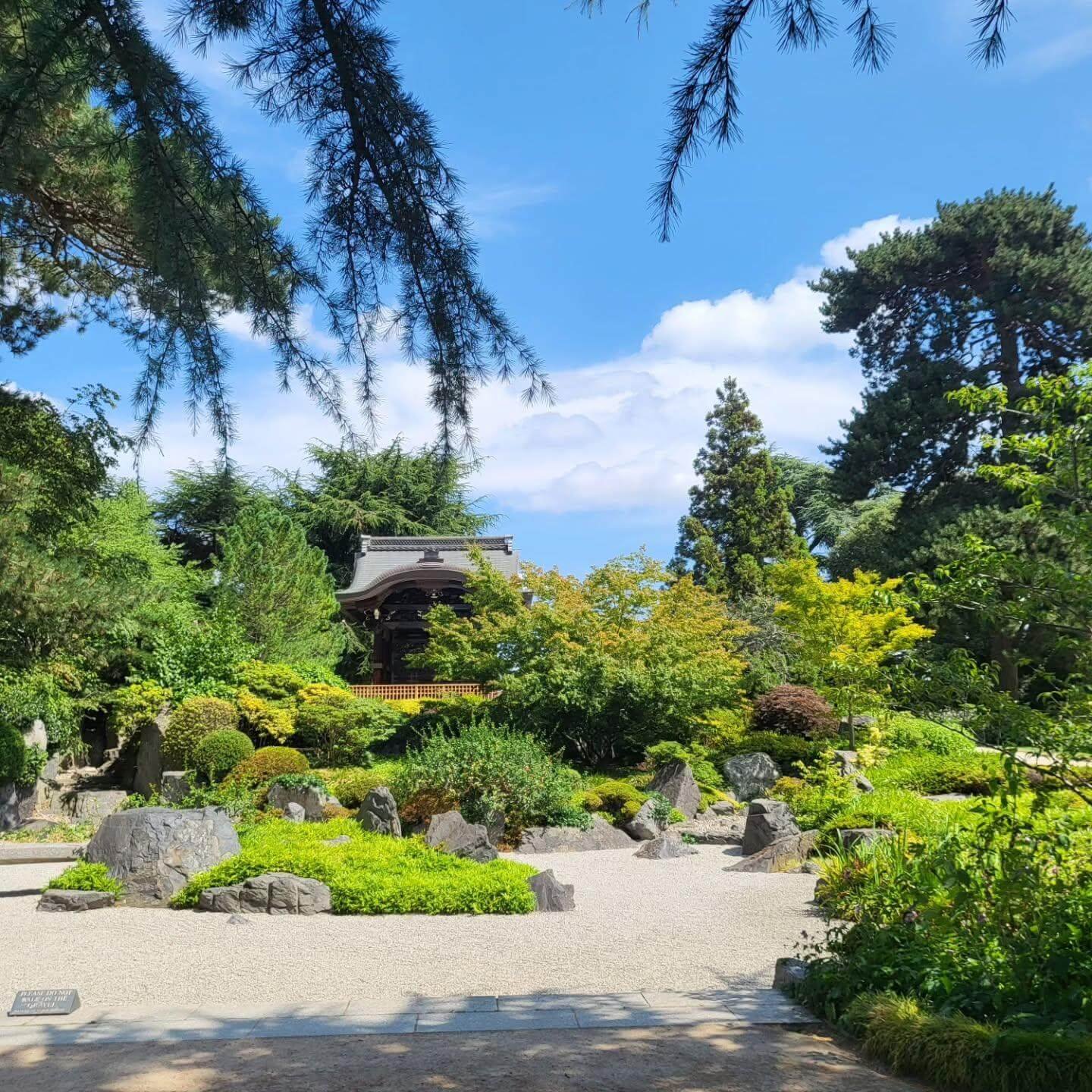
Karesansui, or dry landscape gardens, are a hallmark of Zen Buddhist temples. This serene setting uses gravel to symbolize water, with larger rocks representing islands or mountains.
Unlike lush strolling gardens, the Zen rock garden focuses on abstraction and meditation. Carefully raked patterns create visual flow, inviting introspection and mindfulness.
This style works beautifully in both residential and commercial outdoor areas, offering a low-water alternative that still feels organic. Pairing rocks with evergreen shrubs and subtle topography ensures visual interest without overwhelming the eye.
Introduce Movement with a Cascading Waterfall Feature
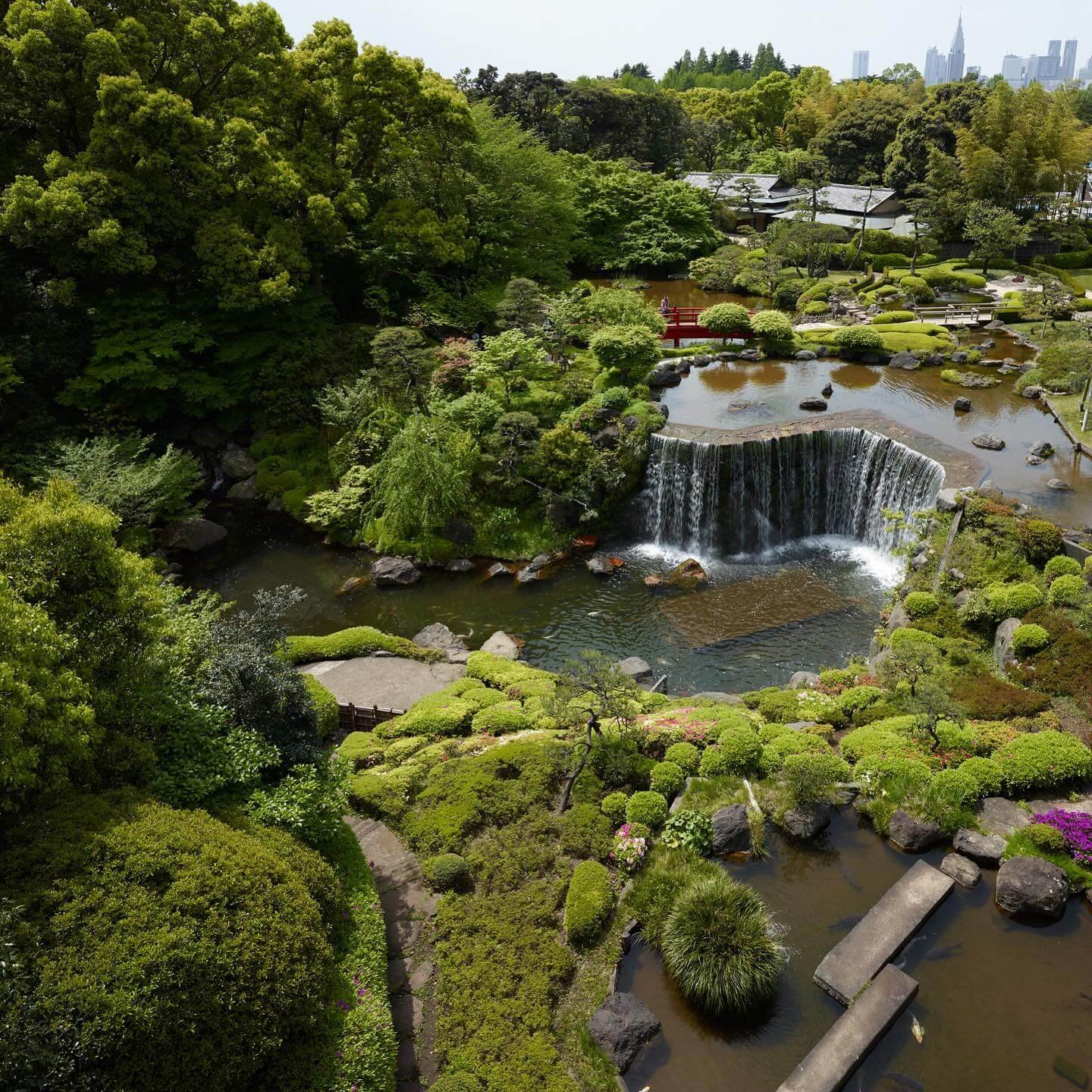
Water features are central to Japanese garden philosophy, symbolizing the ever-changing nature of life. This design incorporates a stunning waterfall flowing into a koi-filled pond, framed by layered greenery and stone bridges.
The movement of water adds an auditory layer of calm and invites wildlife into the space. Strategically placed pathways and bridges offer a journey across the landscape, enhancing the experiential quality.
If you’re designing a larger space, incorporating a waterfall is not just visually compelling—it also promotes peace, balance, and natural cooling during warmer months.
Design a Wabi-Sabi Inspired Corner Garden
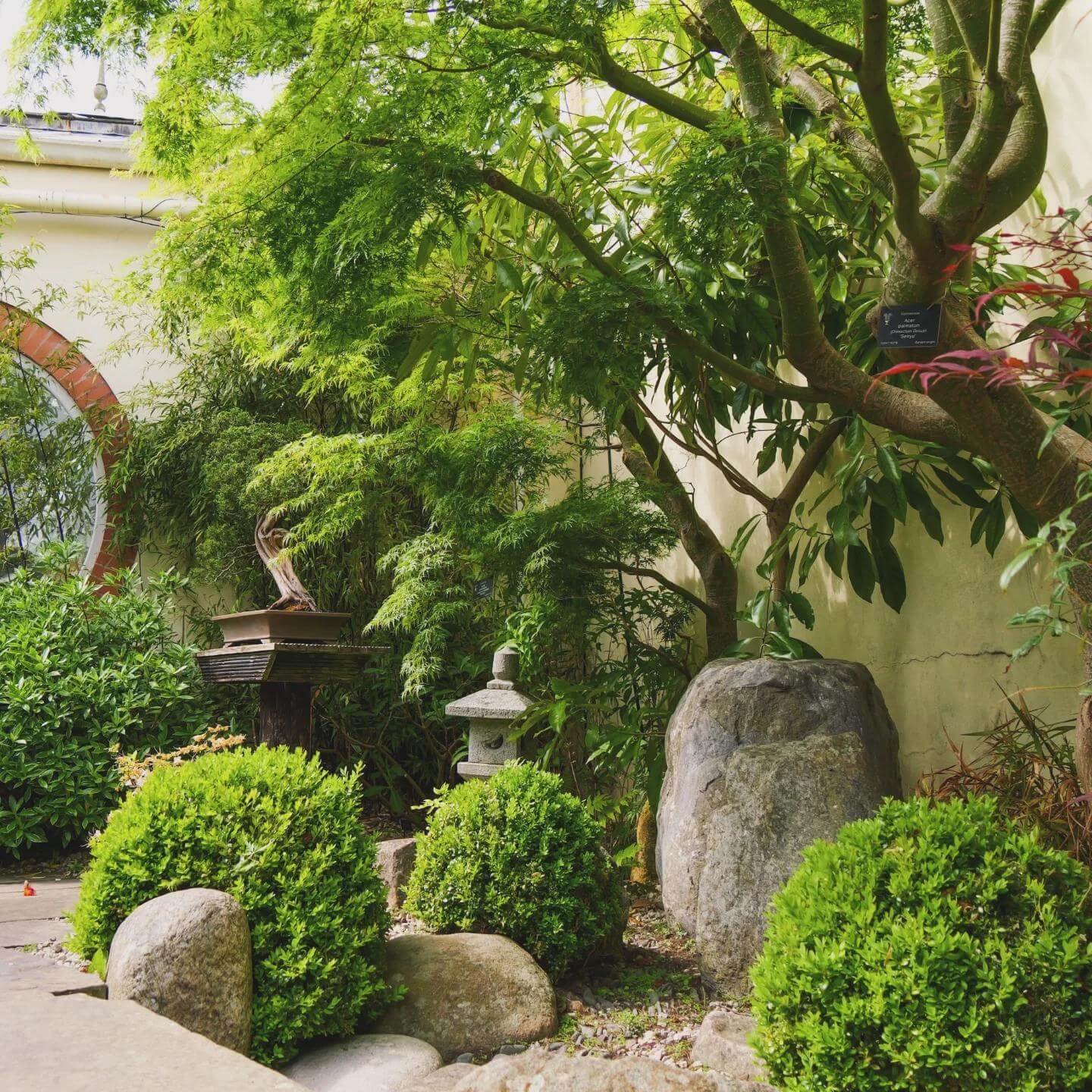
This charming side garden captures the essence of wabi-sabi—the Japanese aesthetic of finding beauty in imperfection and impermanence. The use of mossy stones, aged lanterns, and organically shaped plants creates an effortlessly natural scene.
Tucked against a stucco wall, this layout maximizes vertical and horizontal layers without requiring a large footprint. It’s an ideal option for side yards or transitional spaces.
Incorporate bonsai or pruned maples for structure, and allow natural aging and patina to deepen the garden’s character over time. It’s a gentle reminder that imperfection can be its own kind of perfection.
Merge Indoor and Outdoor with a Garden View Alcove
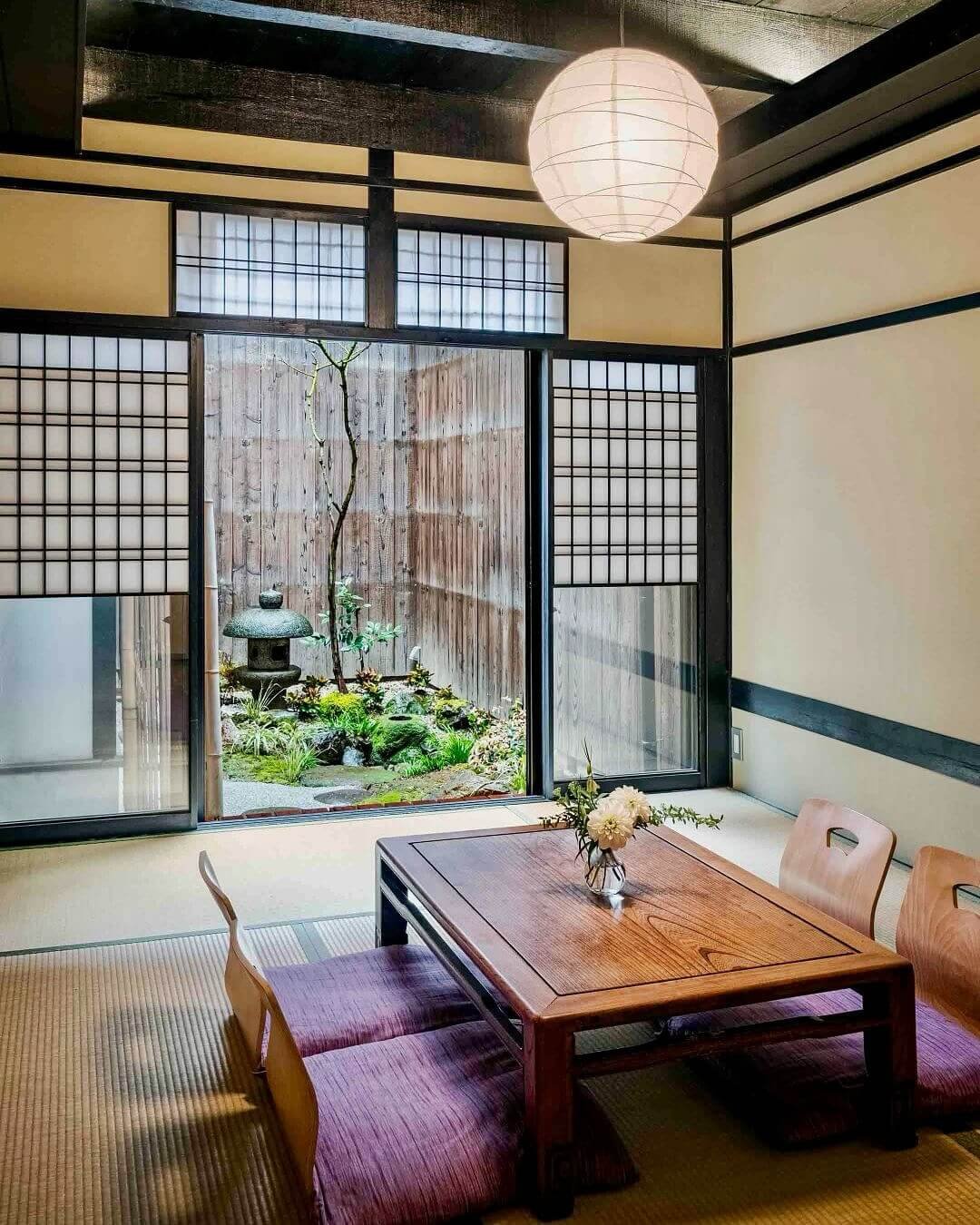
Blurring the line between indoors and outdoors is a classic Japanese design technique. This layout highlights a garden alcove directly visible from a tatami room, enhancing the meditative quality of interior spaces.
The shoji screens frame the view, acting like a living painting that changes with the seasons. Including a small lantern and asymmetrically placed plants in this type of courtyard draws in natural beauty without overwhelming the interior space.
This idea is perfect for integrating biophilic design into a minimalist home, offering both aesthetic appeal and a mental reset.
Design a Stream Path for Organic Flow
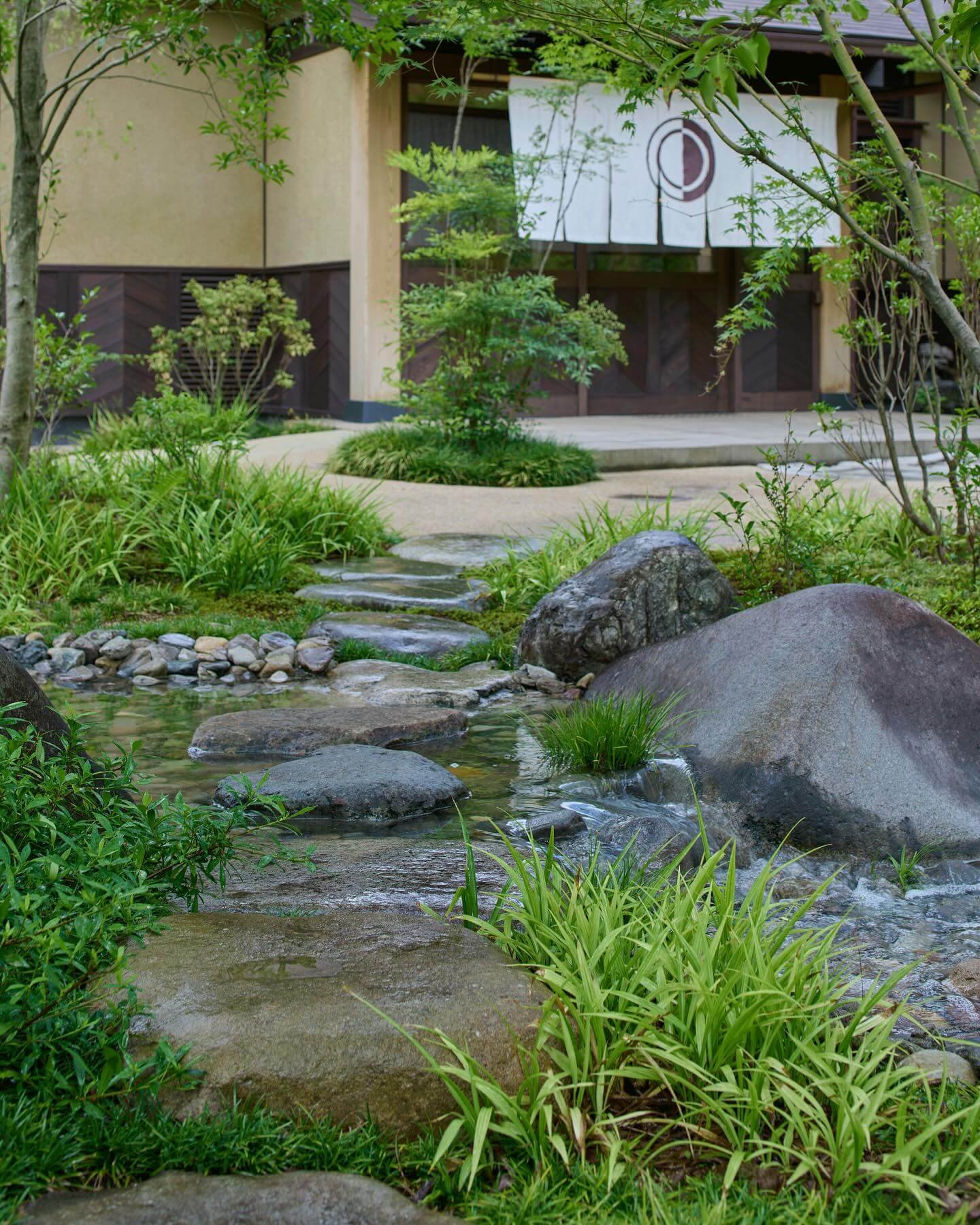
A shallow stream with stepping stones creates a soothing visual and auditory element, making it a perfect addition to any Japanese-style landscape. Water movement, combined with natural rocks and grasses, brings the concept of nagare (flow) to life.
This idea is especially effective near entryways or tea houses, setting a tranquil tone for guests. The path subtly invites movement while promoting mindfulness, ensuring every step becomes part of the experience.
A stream garden is also a clever way to manage rain runoff while enhancing natural aesthetics.
Add Symbolism with a Tsukubai Water Basin

A tsukubai, or stone water basin, was traditionally used for ritual cleansing before tea ceremonies, and today it still brings symbolic purity to Japanese gardens. Paired with moss, gravel, and minimalist foliage, this element adds depth and texture to a small garden.
It’s an excellent feature for enhancing corners or transitional zones, especially near patios or entry points. Consider adding a bamboo spout (kakei) and maintaining a low profile to encourage quiet contemplation.
The tsukubai embodies humility—perfect for gardens aiming to reflect traditional values and serene intentions.
Create Harmony with a Shoji-Framed Pocket Garden
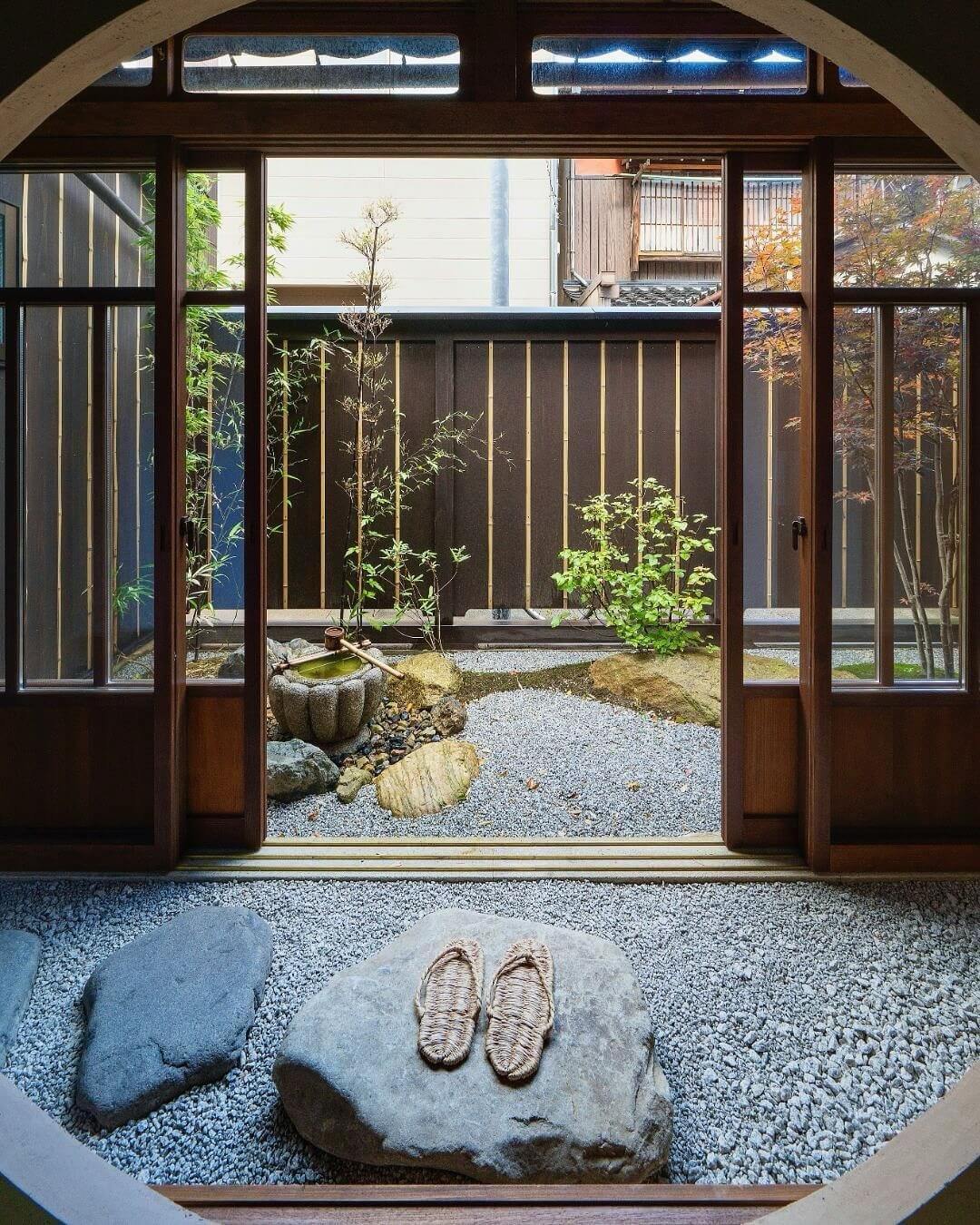
This compact design integrates a pocket garden within an enclosed space using sliding doors and gravel ground cover for effortless elegance. Vertical bamboo elements provide privacy while also offering rhythm and repetition—key principles in Japanese design.
The circular opening and simple water feature draw the eye inward, inviting reflection without distraction.
This style works beautifully in modern urban homes where outdoor space is limited but the desire for nature remains strong. It’s a practical idea for achieving minimalist Zen in tight quarters.
Build a Pond-Centered Garden for Year-Round Appeal
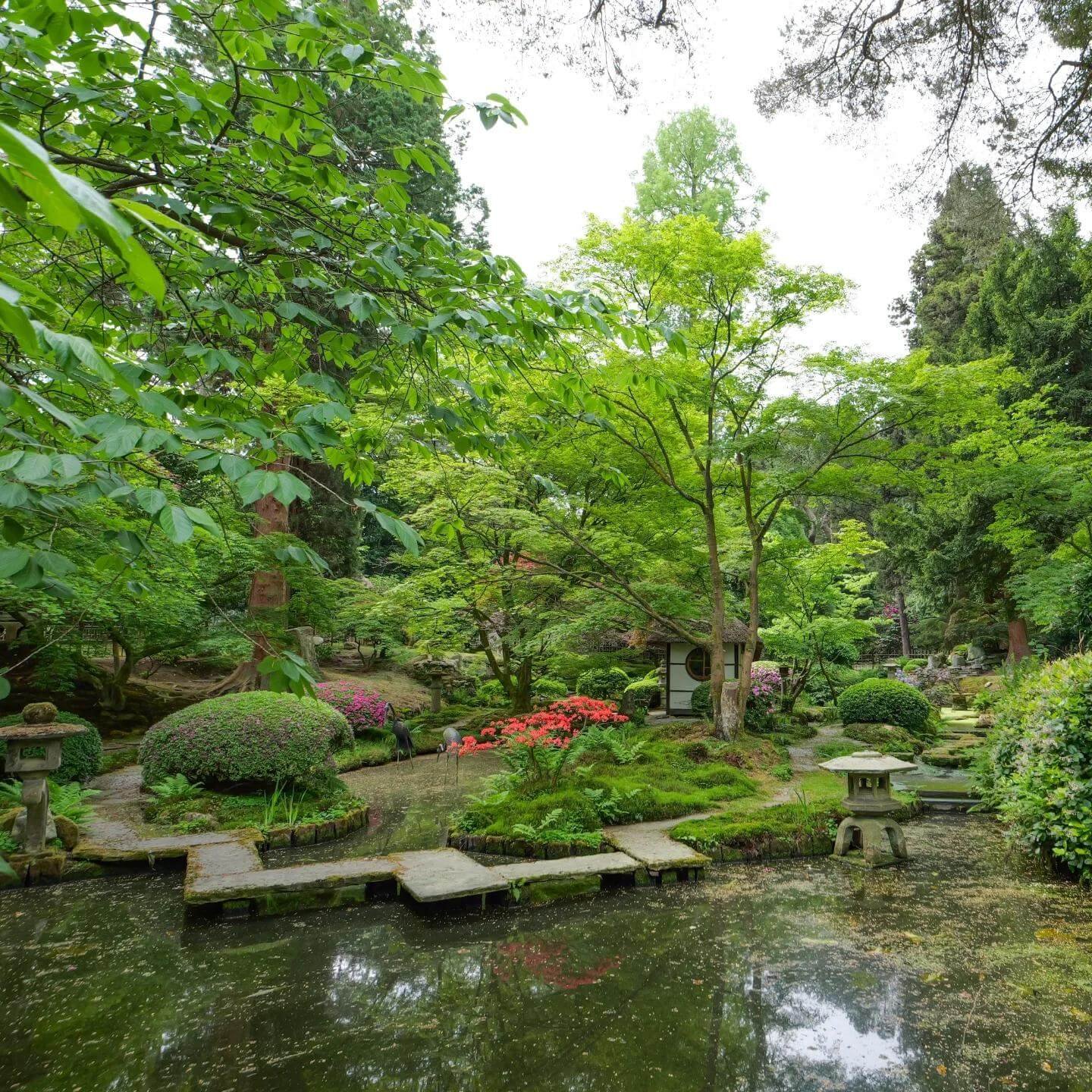
A garden built around a reflective pond creates a dynamic focal point throughout the seasons. This classic element encourages wildlife, enhances humidity for nearby plants, and offers a peaceful spot for viewing nature.
Complemented by bridges, azaleas, and stone lanterns, the pond anchors the layout while allowing surrounding features to shine.
This idea suits medium to large spaces and pairs well with mossy groundcover and layered planting schemes. The mirror-like surface captures shifting skies and foliage, bringing constant change to the garden’s composition.
Celebrate Seasonal Beauty with Cherry Blossom Trees
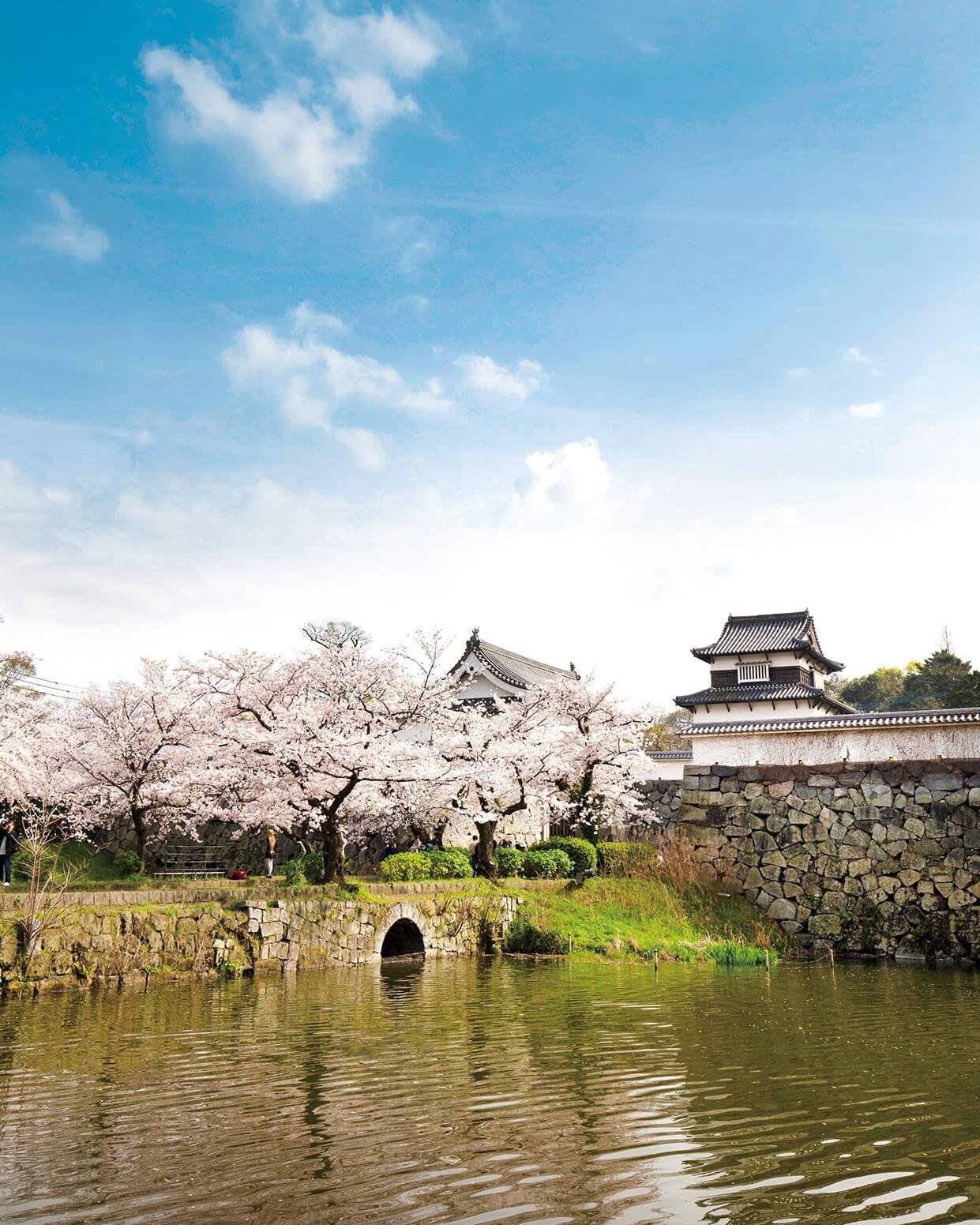
No element captures the ephemeral beauty of Japanese culture quite like the sakura (cherry blossom). Incorporating cherry trees into your garden not only brings stunning spring blooms but also invites the Japanese practice of hanami—the tradition of appreciating fleeting moments.
Planted near water or along garden paths, sakura adds a poetic touch, especially when petals fall like soft snow onto the landscape. These trees pair beautifully with stone elements and historic-style walls, providing a timeless, storybook aesthetic.
Layer Texture with Mounded Shrubs and Gravel
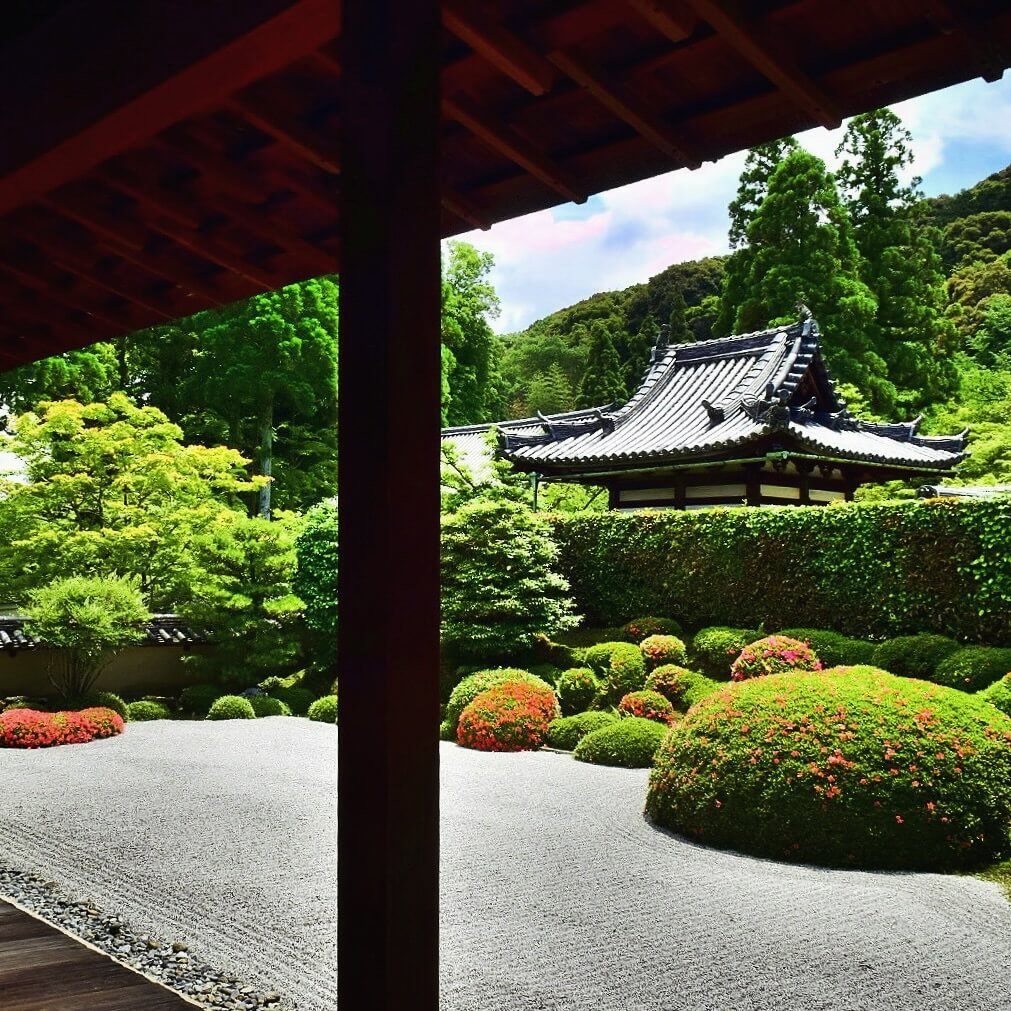
This garden demonstrates the power of contrast through rounded shrubs, raked gravel, and lush trees. Carefully clipped mounds soften the sharpness of gravel fields, creating rhythm and flow across the space.
It’s a beautiful example of shakkei (borrowed scenery), where the garden appears to blend into the background. This design excels in larger plots where structure and subtlety can coexist. It’s a balanced option for those who want formality without rigidity.
Enhance Serenity with a Koi Pond and Maples

A koi pond framed by Japanese maples delivers a multisensory experience—sight, sound, and even seasonal scent. The vibrant reds of the maples contrast with the cool, still water, while koi introduce life and movement.
Add moss-covered rocks and evergreen shrubs for structure, and you’ll create a tranquil retreat perfect for meditation or quiet conversation. Koi ponds not only serve as a peaceful focal point but also represent luck and longevity in Japanese symbolism.
Create Calm with a Temple-Style Rock and Moss Garden
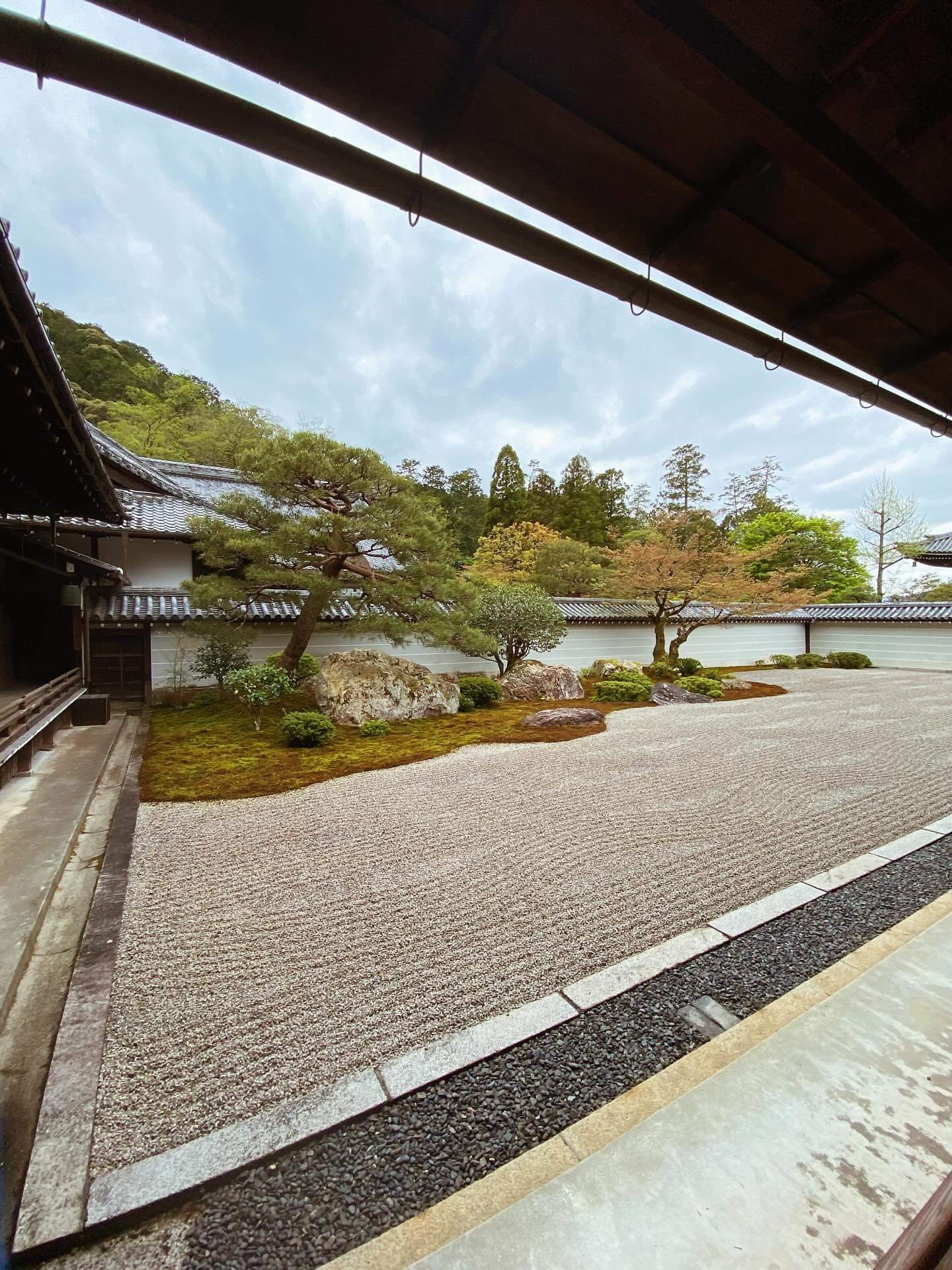
Inspired by temple Zen gardens, this minimalist layout focuses on intentional emptiness. Moss islands emerge from a field of raked gravel, with a few precisely placed rocks acting as focal points.
This design works especially well in enclosed courtyards or as a backdrop to traditional architecture. It encourages stillness and contemplation, offering a stark contrast to busier gardens. For those seeking deep calm and meditative clarity, this type of dry landscape is ideal.
Latest Posts
- Kids Room Curtain Ideas That Balance Function and Fun

- Backyard Deck Ideas That’ll Transform Your Outdoor Space Into Something Special
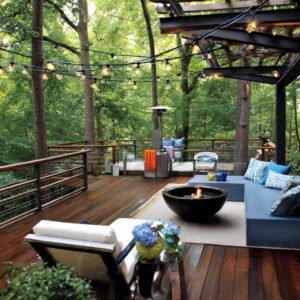
- Modern Living Room Designs That’ll Make You Want to Redecorate ASAP

- Garden Pergola Ideas With Roof That Provide Real Protection
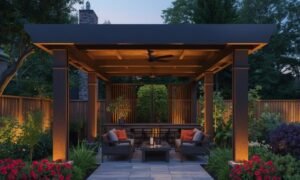
- Garage Pergola Ideas That Turn Plain Parking Areas Into Design Features

- Small Patio Dining Ideas That Make Outdoor Meals Possible
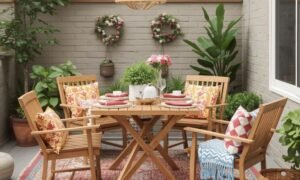
Blend Modernity and Nature with Stepped Garden Paths
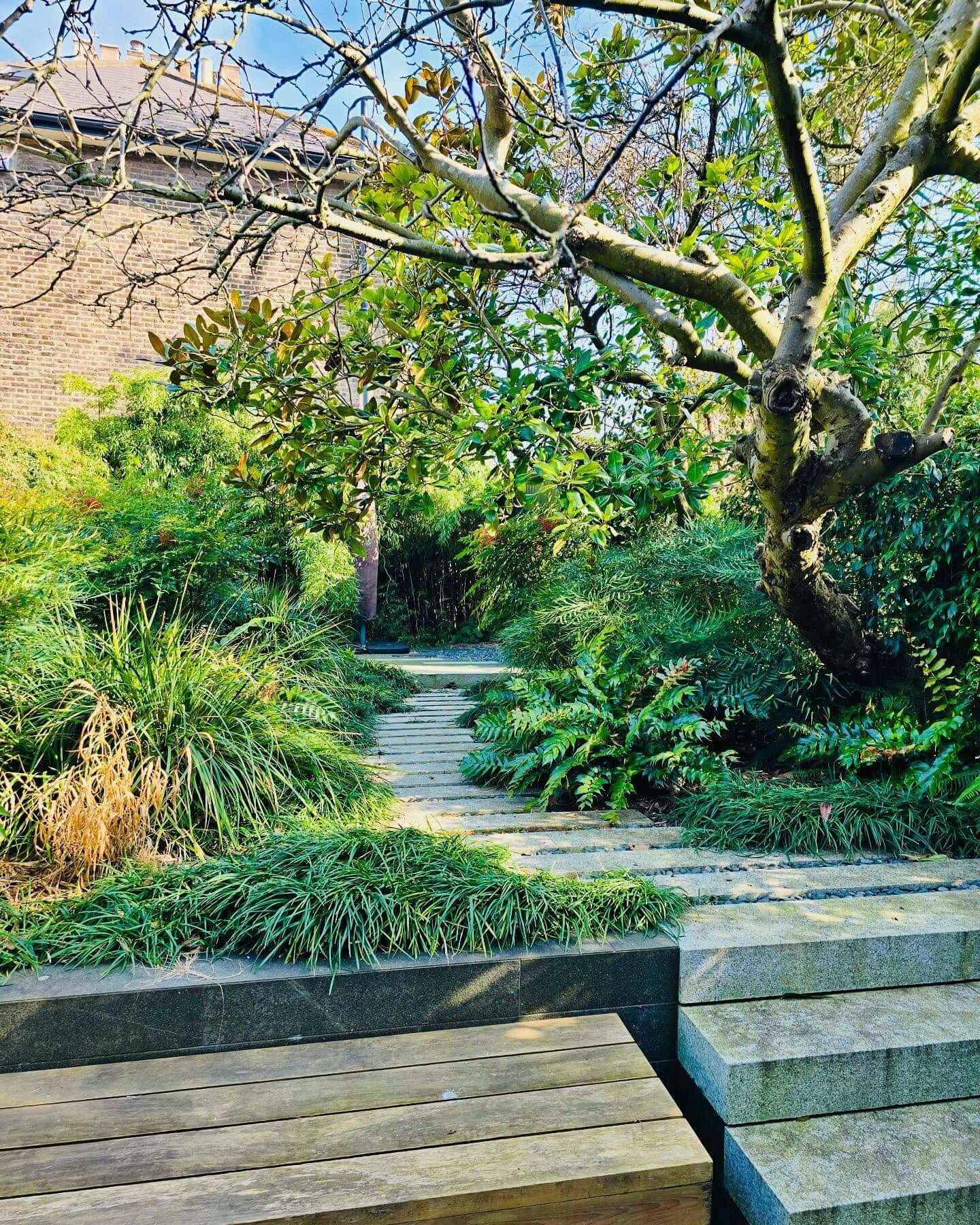
This design puts a modern twist on traditional garden principles by incorporating linear stepping stones through dense greenery. The path feels intentional yet natural, offering a sense of progression and discovery.
Use plants like mondo grass, bamboo, and ferns to maintain a Japanese aesthetic while allowing room for creative interpretation.
This style is especially well-suited for contemporary homes that want to echo the harmony and structure of Japanese design without replicating it verbatim.
Frame Your Garden with Architectural Harmony
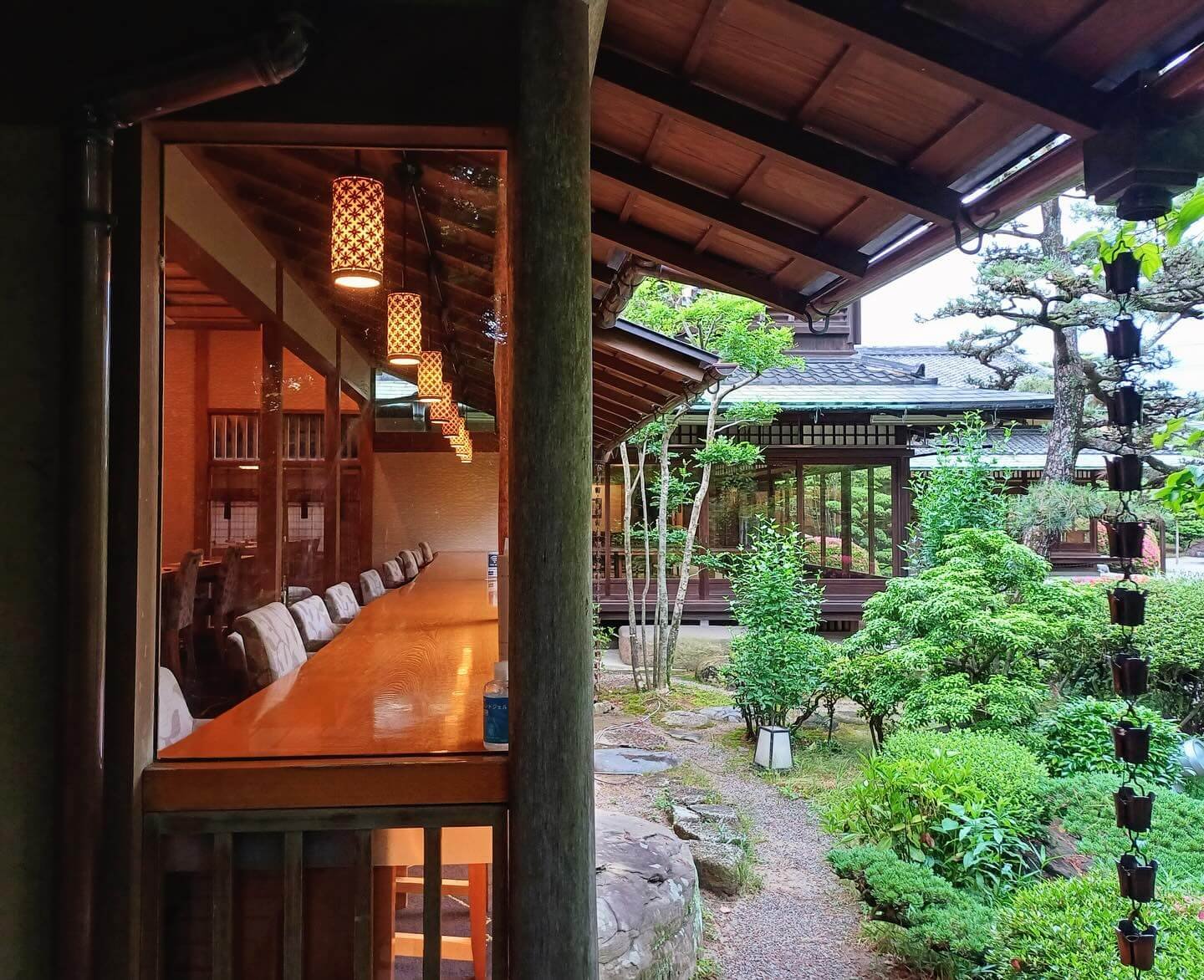
One of the most elegant ways to highlight a Japanese garden is by designing the house or structure around it. This example showcases how wood, glass, and symmetry blend with carefully maintained greenery to create a holistic living environment.
The garden path becomes an organic hallway between spaces, allowing indoor and outdoor elements to coexist fluidly. If you’re building or renovating, consider orienting key rooms—like dining areas or tea rooms—toward the garden to promote daily reflection and connection with nature.
Use Meadows and Wild Growth for a Naturalistic Touch
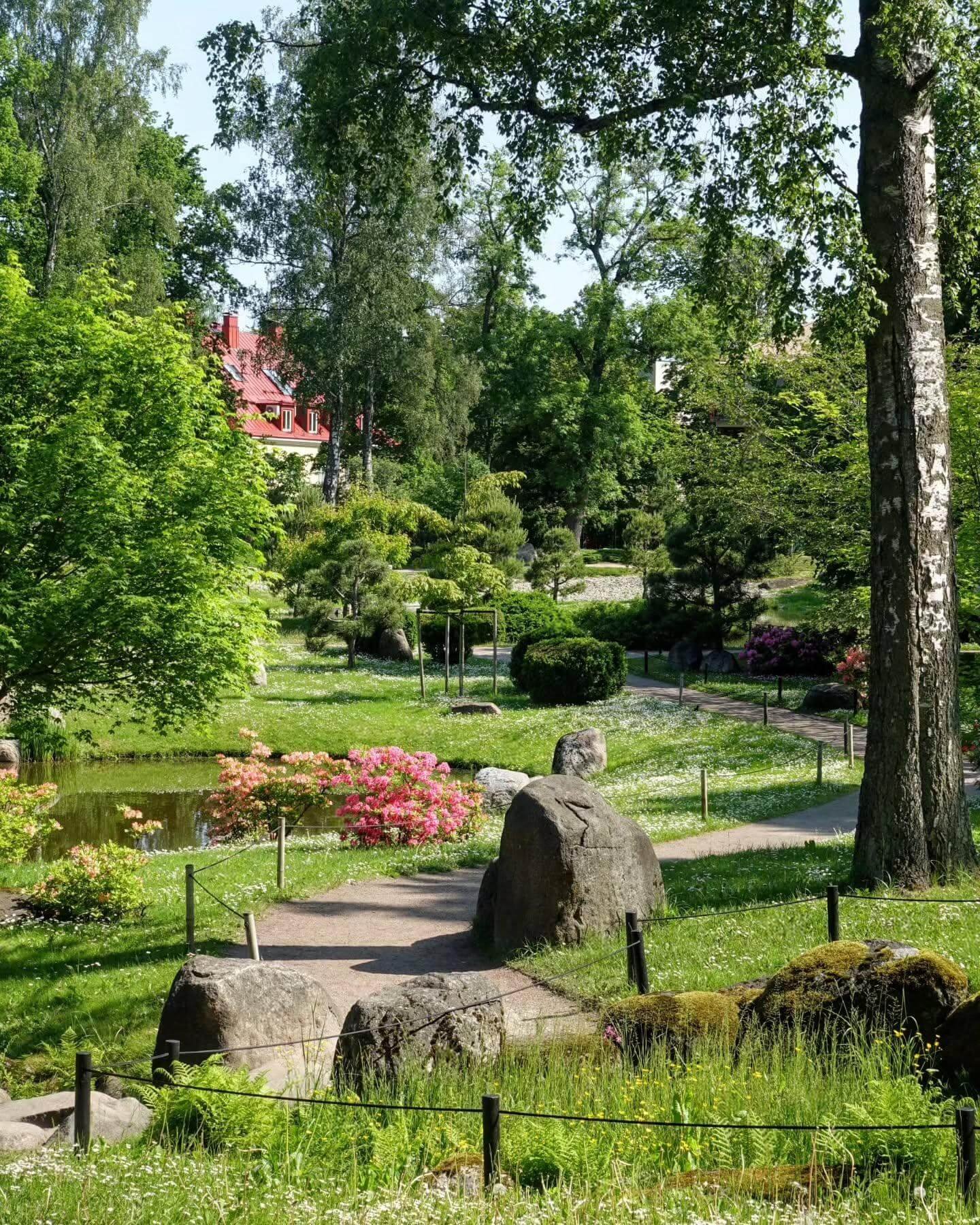
While Japanese gardens are known for their precise minimalism, incorporating open meadows and scattered rocks creates a more rustic, natural look. This design blends elements of a traditional stroll garden with more relaxed, informal planting.
Ideal for larger properties, this style allows native grasses, mosses, and wildflowers to complement more structured design elements. It’s a perfect balance for gardeners who want to honor Japanese principles without high maintenance or strict pruning.
Add Character with Irregular Stepping Stones
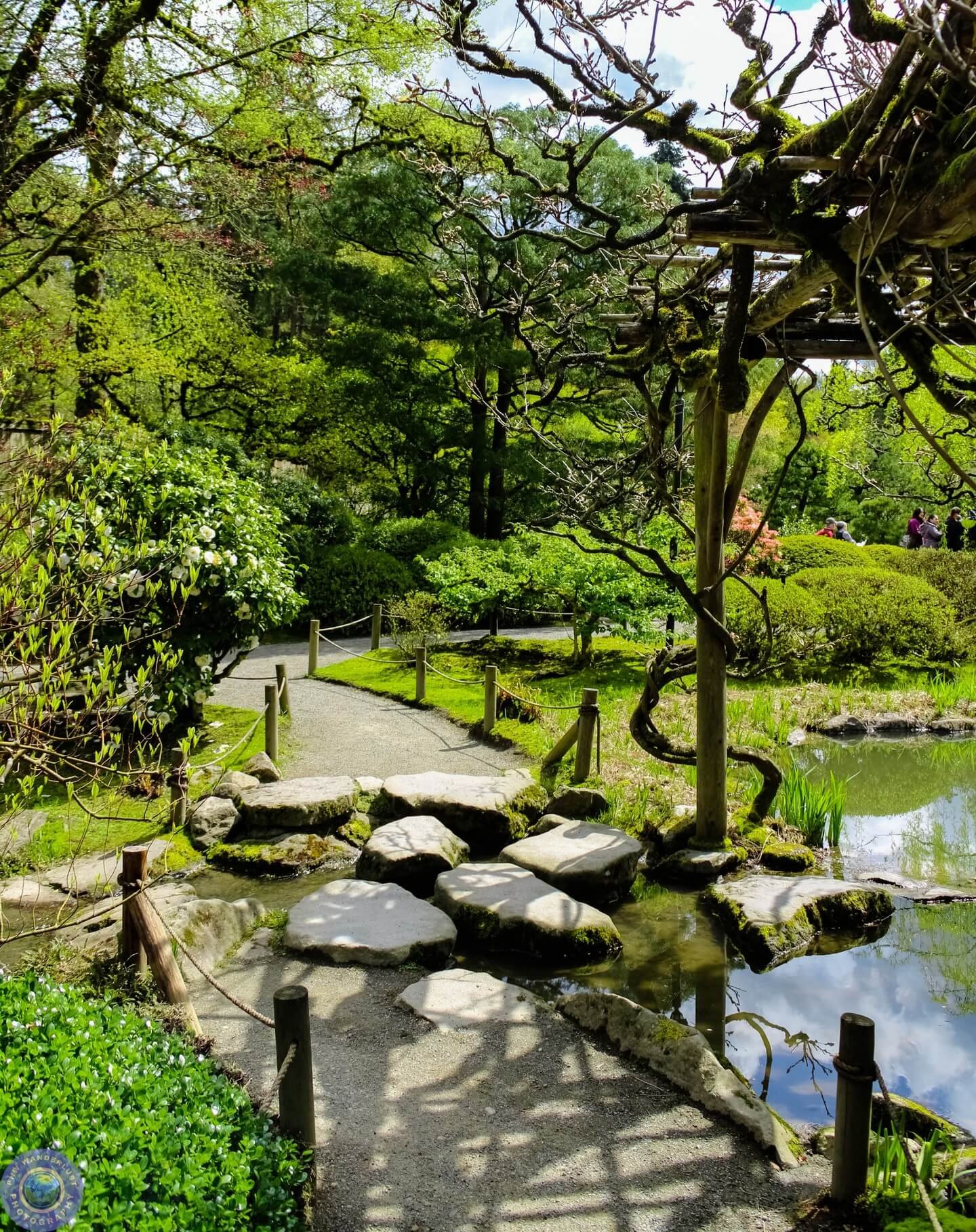
Curved paths and irregular stepping stones over shallow water evoke the traditional roji, or dewy path, often used in tea gardens. These elements slow down movement and increase mindfulness, reinforcing the meditative purpose of the space.
Flanked by moss, wooden trellises, and pruned shrubs, this garden style encourages pause and appreciation at each turn. It’s an excellent idea for backyard transitions or shaded areas where reflection and quiet ambiance are key.
Sculpt Your Space with Niwaki Tree Pruning
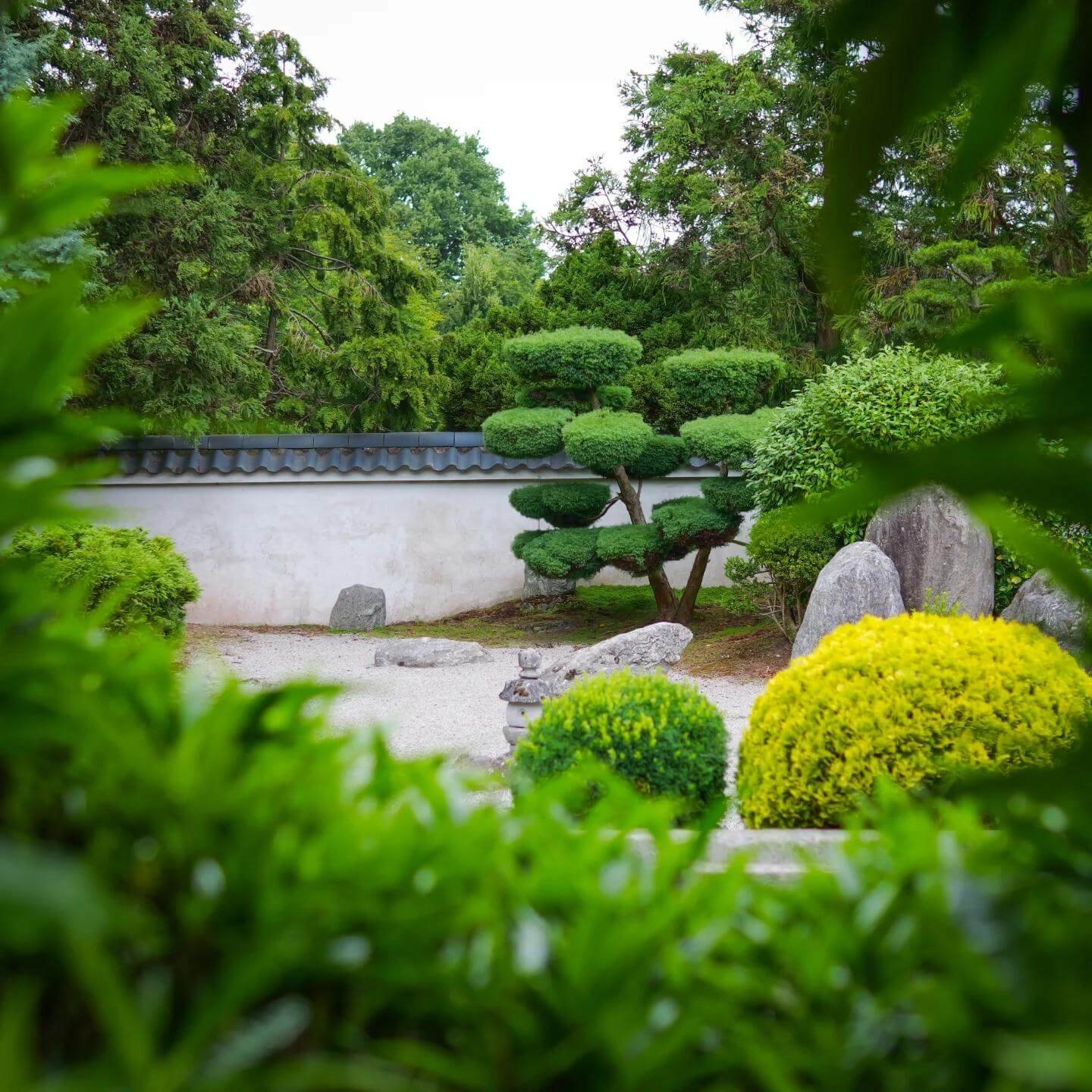
The art of niwaki—or garden tree shaping—is essential in Japanese garden aesthetics. Carefully pruned evergreens like pines and azaleas form abstract shapes that mimic clouds or rolling hills, adding depth and character without overgrowth.
This garden demonstrates how strategic trimming paired with rock placement and gravel can create a visually balanced, almost sculptural space. Whether you’re working with mature trees or starting fresh, niwaki introduces a living art element into your garden.
Combine Stone, Water, and Architecture for Bold Impact
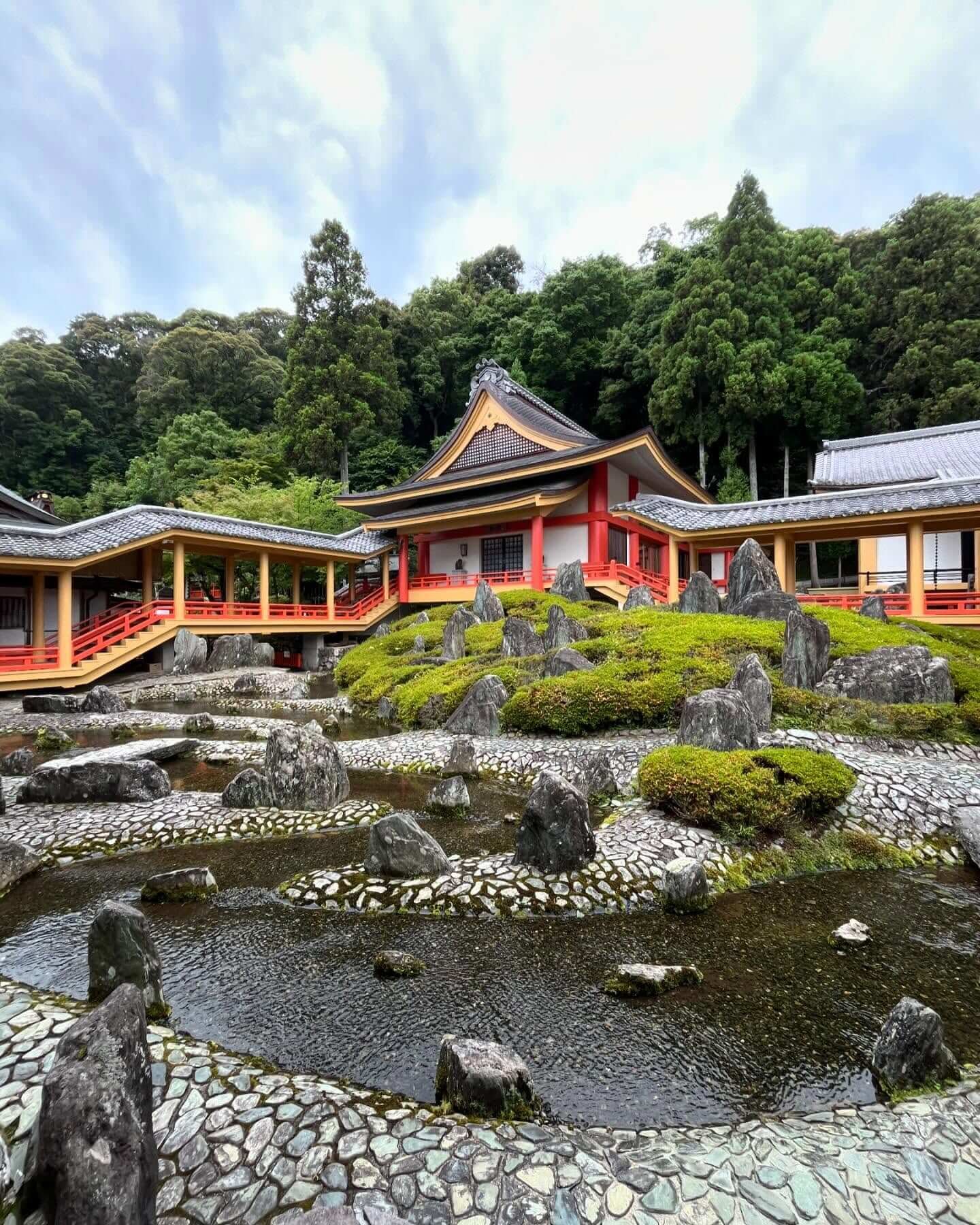
Some of the most impressive Japanese gardens weave together all key elements—stone, water, moss, and built structures—into one cohesive experience. This bold design uses rounded river stones, flowing water channels, and temple-style architecture to anchor the space.
The red accents and multi-level layout add visual drama while staying rooted in tradition. Ideal for cultural spaces, resorts, or expansive homes, this approach showcases the full potential of Japanese garden philosophy in action.
Embrace the Art of Tranquility Through Japanese Garden Design
Japanese gardens are not just outdoor spaces—they’re living, breathing compositions of peace, intention, and timeless beauty. Whether you’re working with a tiny urban courtyard or a sprawling backyard, the principles behind these gardens can help you craft a serene sanctuary that soothes the senses and nurtures the soul.
From tranquil koi ponds and tsubo-niwa courtyards to meditative rock gardens and seasonal blooms, the design ideas showcased here prove that harmony with nature doesn’t require extravagance—just thoughtfulness. Japanese garden aesthetics encourage mindfulness, slow living, and a deeper connection to the natural world, making them more relevant than ever in our fast-paced lives.
By integrating even a few of these ideas, you can transform your garden into a space that feels timeless, intentional, and utterly peaceful. The essence of a Japanese garden lies not in perfection, but in balance—and your own version should reflect both your space and your spirit.




